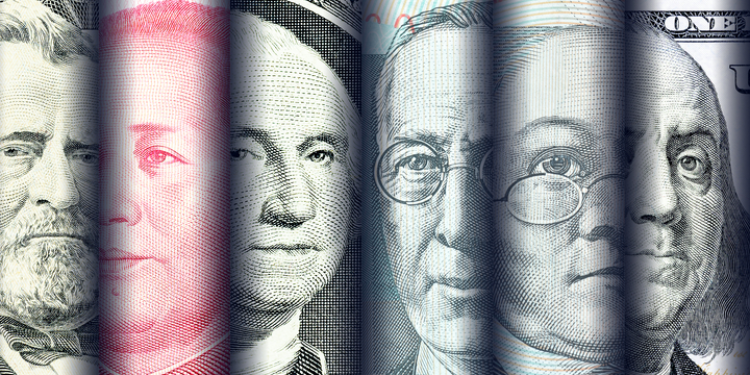United States

The United States' capitalist mixed economy is unsurprisingly for one more year the most prosperous economy in the world. To put things into perspective, think that the American economy is larger than the economies of Germany, the UK, France, India, Italy, Brazil, and Canada combined. The United States' nominal GDP has a value of 20.4 trillion, marking an increase of one trillion since last year, and meaning that the US economy holds more than one-quarter of the global economy pie. The primary economy booster is a highly-developed private sector, followed closely by technology, finance, and healthcare services, and the government sector, which isn't of great significance. The US is the largest importer of crude oil in the world and the second largest exporter — mainly of transportation equipment. Mexico, Canada, Japan, China, and Germany are the country's trading partners, and the US dollar remains a strong, international currency.
China

China is the second largest economy in the world, and throughout the past thirty years, it has undergone a hectic development journey to be ranking nowadays just after the colossal American power. Since the late 1970s, when China's economic reforms began, the country's GDP has climbed from 214 billion to 14 trillion — such a remarkable growth. The services sector is responsible for about half of China's GDP and manufacturing, which is defined by high productivity, high-quality infrastructure, and low-cost labour, for the other half. China's economy today is driven by a rebalancing pattern known as the “new normal”, which has purposely slowed down the rapid economic development to a more controlled and stable one. China is consuming the most energy and imports the most oil in the world. In China we find the second-largest concentration of billionaires. However, the country faces severe economic inequality, as only one percent of Chinese people hold more than one-quarter of the country's total wealth.
Japan

Japan's annual GDP is measured at 5.1 trillion, bringing East Asia's sovereign island nation to the third place. Japan's economy is based on its vast automobile manufacturing and electronics industries, which are revolutionary and innovative. Japan exports from vehicles, auto parts, and transportation equipment to iron products; it imports among others fossil fuels, chemicals, and raw materials. Japan's trading partners are China, the US, South Korea, Hong Kong, and Thailand. The unemployment rate is at 4%, which is very low for the global standards. However, the country's biggest concerns at the moment are the low birth rates and an ageing population which soon won't be active in the job market.
Germany

The economy of Germany isn't independent and detached from Europe's financial ongoings, and the German market is supervised by European Union monetary and commercial policies and legislation. However, Europe's financial crisis and Germany's involvement with Greece's weakness to respond to it, haven't moved Germany from the top five thanks to a high GDP of 4.2 trillion. Germany's economy is outlined by discipline and certainty, with a highly skilled workforce working mainly in the service sector, large capital stock, low corruption, and innovations. Germany is one of the largest exporters in the world of arms, vehicles, chemical goods, machinery, electronics, and pharmaceutical. When compared to the other 28 European Union member states, Germany has the lowest unemployment rate (less than 5%) and the highest labour productivity in the world.
United Kingdom

The United Kingdom completes the top five of the world's biggest economies with a remarkable GDP of 2.94 trillion. The service sector, which includes transport, business, computing, tourism, and finance, makes up for the 80% percent of the country's total GDP. London is one of the most significant financial hubs in the world, and also a promising city regarding employment for both the expats and the local population. Although many rushed to predict that the economy of the UK will be severely hit by Brexit, so far we haven't witnessed anything like it. However, it's true that private consumption has slowed down and investment is limited due to the uncertainty that Brexit has created. UK's top exports are gold, cars, gas turbine, and refined petroleum, and the trading partners are the US, Germany, Switzerland, China, and the Netherlands.
Sources :
- World Economic Forum : https://www.weforum.org/agenda/2018/04/the-worlds-biggest-economies-in-2018/
















